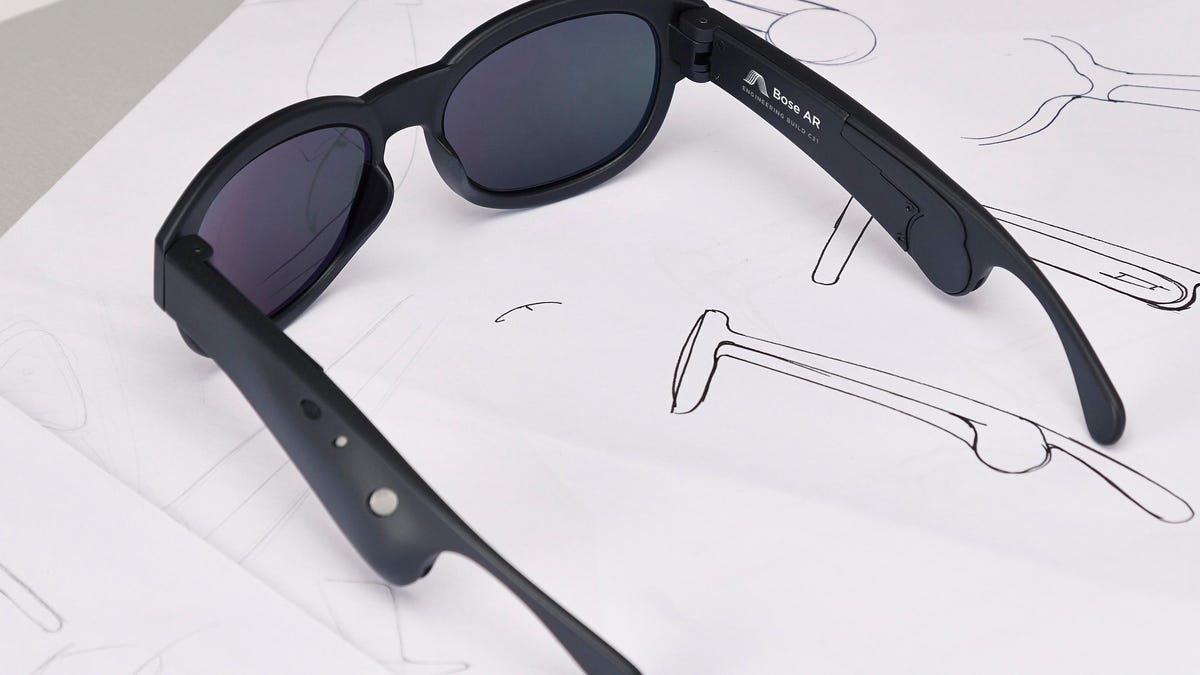Bose has a plan to make AR glasses
Best known for its speakers and headphones, the company has created a $50 million development fund to back a new AR platform that's all about audio.
OK, so this is weird, and not what we were expecting when Bose told us it was making a new product announcement at this year's SXSW: It's creating an augmented-reality platform.
That's right, Bose is getting into the AR glasses game, but it's not what you think. The augmented-reality platform it has announced -- and set up a $50 million venture fund to support it -- is about audio, not video. Bose is calling it the first "audio augmented platform" and says its Bose AR prototype -- "glasses to hear" -- is the future of mobile sound.
For now the glasses won't be available to consumers, a Bose spokesperson told CNET, just to developers and manufacturers (the Bose AR SDK, and limited quantities of a refined and updated version of the Bose AR glasses, will be available this summer). It's unclear when they will be available to consumers or how much they'll cost. Bose also didn't say whether you'll be able to get a prescription lens put in them.
Think of it as different type of wearable headphone that's got some very smart features.
"Unlike other augmented reality products and platforms, Bose AR doesn't change what you see, but knows what you're looking at -- without an integrated lens or phone camera," Bose said. "And rather than superimposing visual objects on the real world, Bose AR adds an audible layer of information and experiences, making every day better, easier, more meaningful, and more productive."
Other companies, like German-startup Bragi, which makes totally wireless in-ear earphones, talk fervently about the computerization of headphones. But Bose has brought the concept to a different form factor, one that can presumably house a larger battery to power the always-on experience.
The secret sauce seems to be the tiny, "wafer-thin" acoustics package developed for the platform. Bose said it represents the future of mobile micro-sound and features "jaw-dropping power and clarity."
Bose adds the technology can "be built into headphones, eyewear, helmets and more and it allows simple head gestures, voice, or a tap on the wearable to control content."
"Bose AR represents a new kind of augmented reality, one that's made for anyone and every day," said John Gordon, vice president of the Consumer Electronics Division at Bose. "It places audio in your surroundings, not digital images, so you can focus on the amazing world around you — rather than a tiny display. It knows which way you're facing, and can instantly connect that place and time with endless possibilities for travel, learning, music and more. And it can be added to products and apps we already use and love, removing some of the big obstacles that have kept AR on the sidelines."
Aside from core features like music listening and call making, Bose said the wearable uses sensors to track head motion, and the GPS from an iOS or Android device to track location. "The sensors send the motion and location data to a Bose AR-enabled app that aggregates the information, sending relevant, real-time content back to the user's ears instantly. And it can be used for multiple applications."
Here are some examples Bose gave for how it might be used:
- For travel, the Bose AR could simulate historic events at landmarks as you view them -- "so voices and horses are heard charging in from your left, then passing right in front of you before riding off in the direction of their original route, fading as they go." You could hear a statue make a famous speech when you approach it. Or get told which way to turn towards your departure gate while checking in at the airport.
- Bose AR could translate a sign you're reading. Or tell you the word or phrase for what you're looking at in any language. Or explain the story behind the painting you've just approached.
- With gesture controls, you could choose or change your music with simple head nods indicating yes, no, or next (Bragi headphones already do this).
- Bose AR would add useful information based on where you look. Like the forecast when you look up or information about restaurants on the street you look down.
We're working on getting a hands-on demo of the product in Austin and will let you know just how good it sounds -- and works -- as soon as we do.


